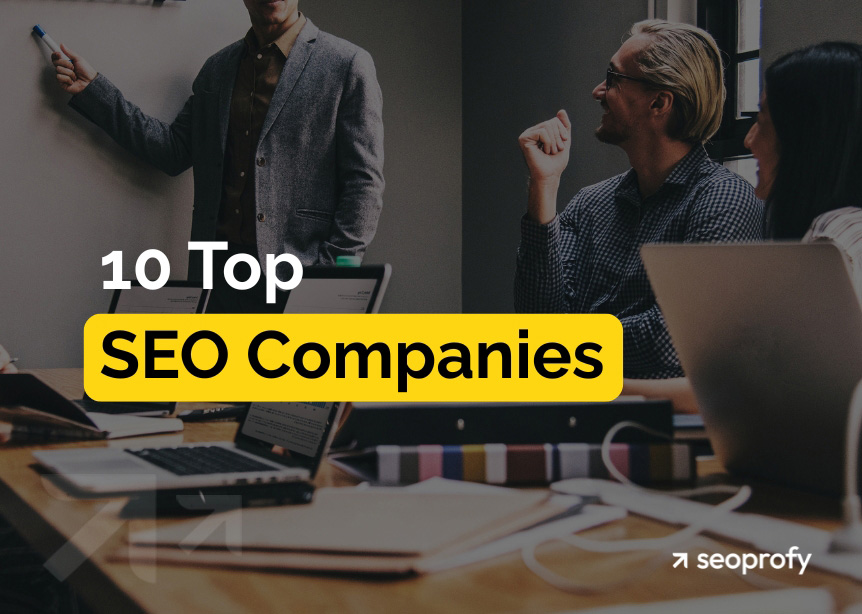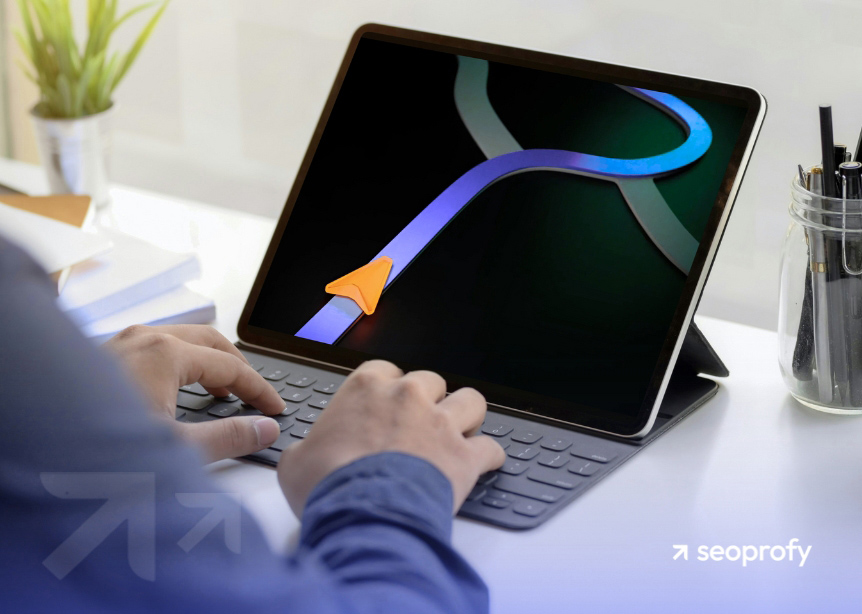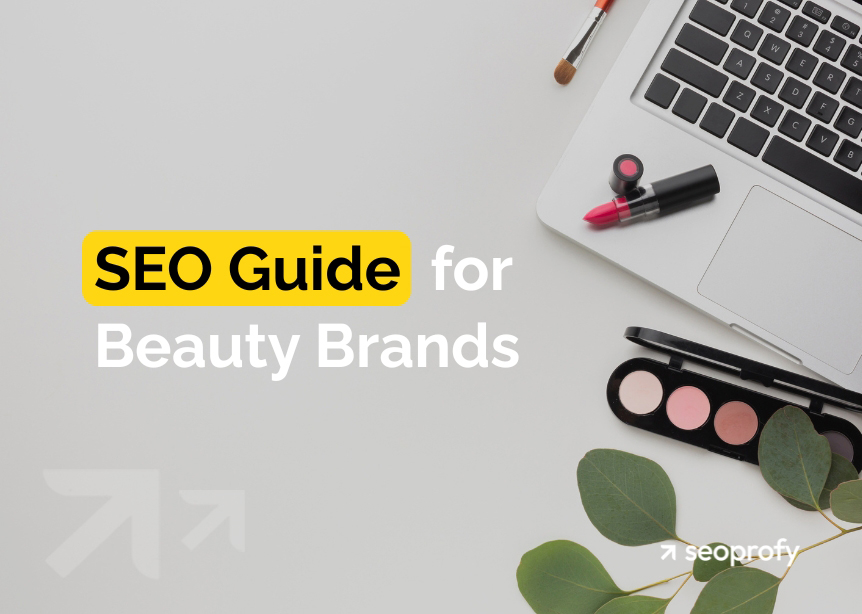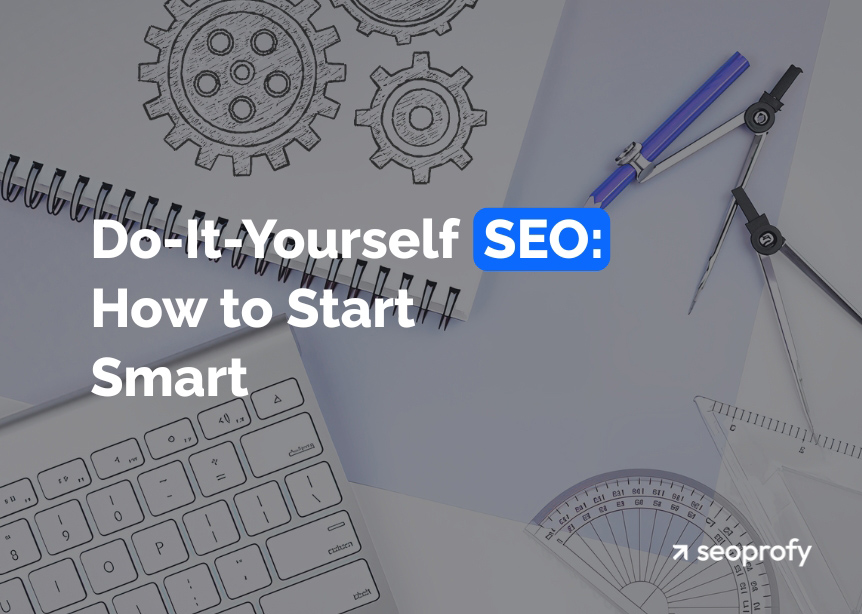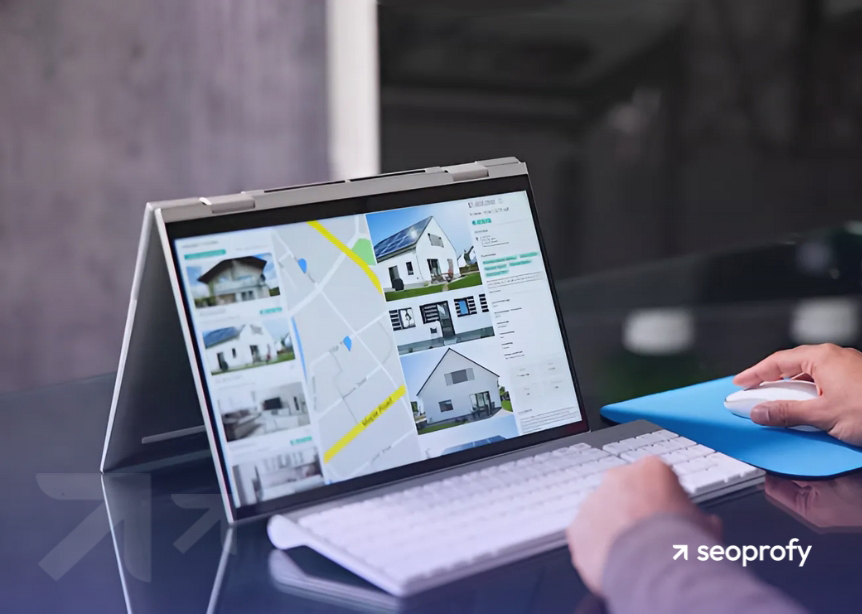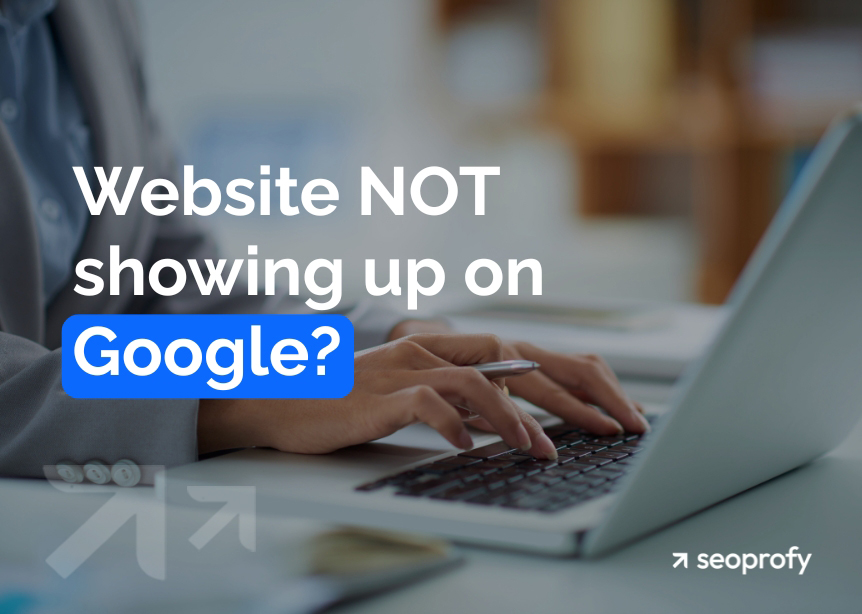Owning an online store can be one of the most rewarding careers for the self-made entrepreneur. However, if your eCommerce site is getting high traffic but no sales, it might be time to reevaluate how to turn those potential customers into hard-earned sales.
From technical issues to a price-value mismatch, there are many possible reasons why your online customers leave without making a purchase. To turn your website visitors into fans and buyers, you’ll have to find and fix those underlying causes. What should you look for, and how do you solve those issues? Well, this is what we will discuss in this article.
Reasons Why You Have Traffic but No Sales
With the eCommerce industry continuing to boom, there is always a competing site that might steal your customers! However, getting potential customers to shop at your store is more of a science than you might think, so figuring out the reason for the lack of sales is more about analysis than guesswork.
eCommerce stores’ customers might not be readily converting to sales because of poorly designed product pages, guest checkout processes, low-quality sales copy, and many other problems. In fact, we can list up to 30 reasons why you might not be experiencing as many sales as you want.
However, our decades of experience in digital marketing have shown that in most cases, the list can be narrowed down to just these ten most common issues:
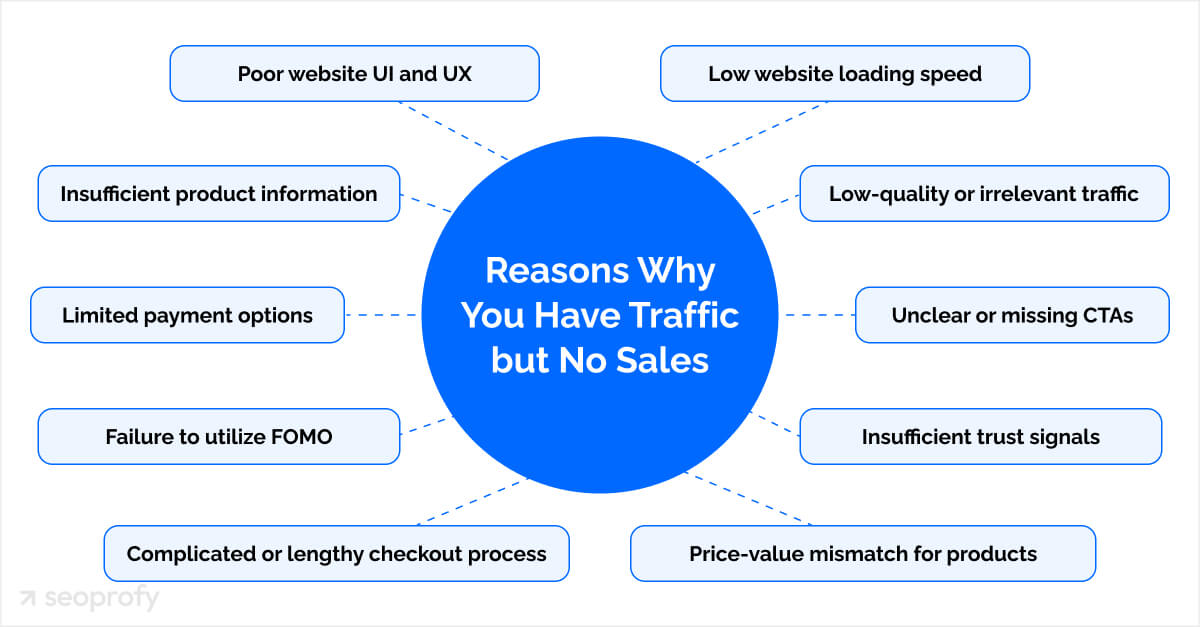
- Poor website user interface (UI) and user experience (UX)
- Low website loading speed
- Low-quality or irrelevant traffic
- Unclear or missing calls to action (CTAs)
- Complicated or lengthy checkout process
- Price-value mismatch for products
- Insufficient product information
- Insufficient trust signals
- Limited payment options
- Failure to utilize fear of missing out (FOMO) tactics.
Let’s take a closer look at each of these points.
Poor Website User Interface (UI) and User Experience (UX)
Besides eCommerce SEO, website design is perhaps the most important factor in converting traffic to sales. A poorly designed website can be a major deterrent for online shoppers. If your website is difficult to navigate, has an unclear or cluttered layout, confusing colors and fonts, or any other issues that make it hard for visitors to find what they are looking for, chances are they will leave without making a purchase.
To avoid this problem, it’s essential to understand how your user interface, or UI, and user experience, or UX, influence a customer’s decision to buy from your online store.
What Is User Interface?
Put simply, the user interface is how your website looks and all the items customers interact with. These include things like:
- Menus
- Buttons
- Website homepage design
- Links
- Product images
- Search bar
- Checkout page.
Fortunately, many templates for online stores come with well-designed and configured user interfaces, so if you have a Shopify store, this might not be the biggest issue. However, if you choose to create a web layout that’s unique to your store, or if you use a website design template that isn’t optimized for eCommerce, this could impact your sales.
For instance, if your search bar isn’t readily visible or easy to use, customers may struggle to find the products they’re looking for and leave your site in frustration. Similarly, if your product images and descriptions are low-quality (or worse — nonexistent), and don’t provide enough information about the product, customers may not be confident enough to make a purchase.
What Is User Experience?
User experience is how your customers feel when they interact with your online store. The quality of the UX depends on how well your website’s navigational elements, buttons, and links function.
UX is crucial for online businesses that want to provide excellent customer service. From navigating product categories to creating an account or selecting an item and paying for it, your UX design should be focused on making the purchasing journey as pleasant as possible.
Why UX and UI Matter
It’s easy to see how your UI and UX tie together. If your UI is wonky and difficult to navigate, the UX is negatively impacted. For example, a customer might be frustrated that they are unable to find the right product despite using keywords in the search bar. Or, they might find it difficult to navigate through the menus and tabs.
Other online shoppers might find your website isn’t optimized for their mobile devices, like tablets or smartphones. These are just some of the many UI issues that may cause your customers to go to another site and never return!
On the other hand, a well-designed UI will positively impact UX and generate sales. If your menus are clear and easy to navigate, buttons are responsive, links are working properly, and product images and descriptions are high-quality, chances are your customers will enjoy shopping and returning to your site.
Low Website Loading Speed
One of the worst things that can impact conversion rates, sales, and UX is low website loading speed. In today’s ever-changing, fast-paced world, most customers simply don’t have the time or patience to wait for a slow website to load.
Even a one-second delay in page loading time can lead to drastic reductions in conversion rates. A study by Portent showed that pages with a loading speed of 1 second have an average conversion rate of 39%, but if they take at least one second more to load, the rate drops to 34%.
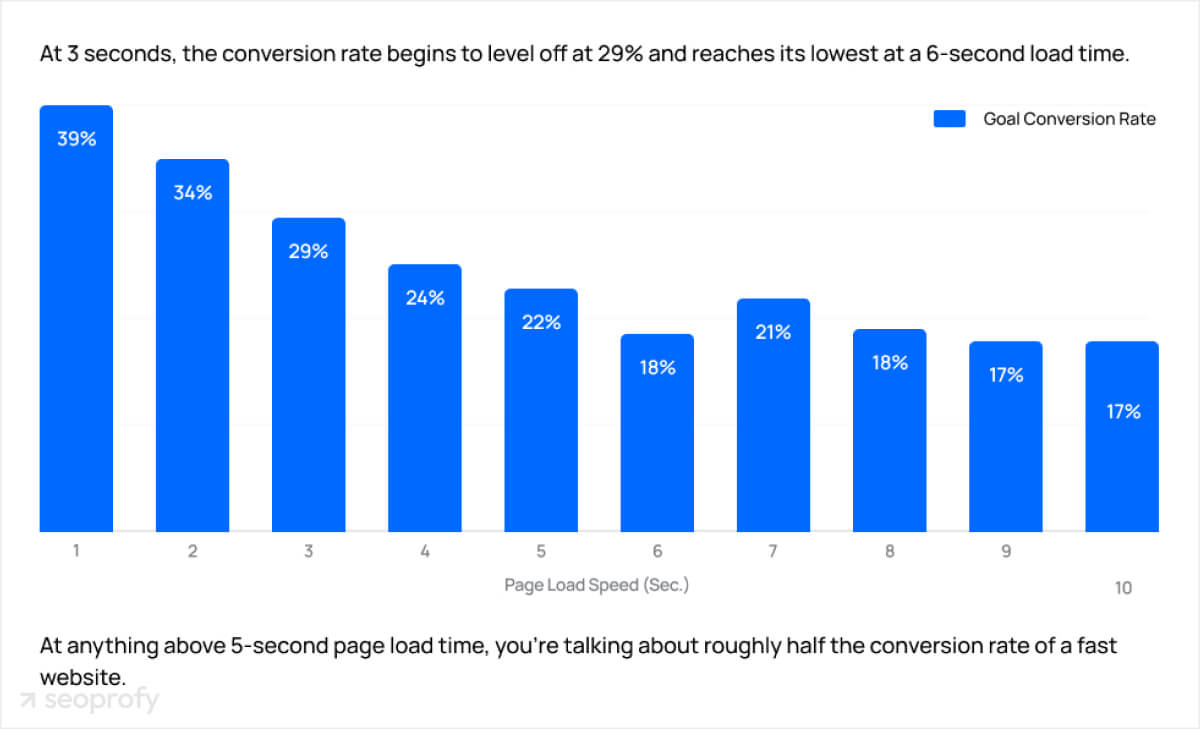
In addition to impacting online store conversion rate numbers, low website loading speeds also negatively impact bounce rates. If your website takes too long to load, customers are more likely to leave at once and visit a competitor’s site instead.
Research shows that mobile users are even less patient when it comes to page loading time. According to statistics from Google, the probability of bounce increases by 32% as page load time goes from 1 second to 3 seconds. That rate then increases to a whopping 123% for 10-second loading times on a mobile device!
In short, longer load times mean higher bounce rates, lower conversion rate numbers, and fewer sales. You can use your own mobile phone to check how fast your Shopify store or other online shop is loading. For more precise data and accurate analysis, check your website’s performance in the Core Web Vitals reports in Google Search Console.
Impact on SEO
Most online store owners falsely believe that using keywords is all that is needed in SEO to start generating traffic and increasing rankings. What they might not realize is that website loading speed plays a big role in search results rankings and, consequently, conversion rate numbers.
Among many other aspects, search engines like Google examine web page loading speeds and other technical errors, like 404 errors, when ranking sites. Any technical errors and slow loading could negatively impact your site’s ranking, ultimately leading to less traffic and potential customers.
If your SEO is not working, it could be a loading speed issue at fault. Do an SEO audit of your website to check for technical issues, broken links in both your header and footer, and other aspects of search engine optimization.
Low-Quality or Irrelevant Traffic
If you’re getting high traffic but no sales, chances are there are also issues with the quality of traffic coming to your site. Low-quality or irrelevant traffic can be just as detrimental to your business as getting no visitors. After all, if your product pages attract visitors who are interested in something else or expect to see something completely different, they will just leave your site.
Don’t be lulled into a false sense of security if you manage to increase website traffic! Instead, learn what type of visitors your site is getting and how to get more relevant traffic to your store. Failing to improve your site because of high traffic will only result in lower conversion rate numbers and sales.
Proper Marketing
First and foremost, it’s crucial to understand how to target your audience and attract them to your store. For instance, if you sell industrial-sized kitchen appliances, you probably won’t get many sales by advertising on a home cooking blog. Instead, target your marketing efforts towards commercial kitchens. The more effort you put into marketing to the right audience from the start, the less time you’ll need to spend trying to fix traffic issues in the long run.
Understanding Search Intent
Knowing what your customers want and what they’re looking for when they conduct online store searches is key for directing them to your site. You might start with keyword research and find relevant and realistic keywords for your site, but what matters most is the search intent behind those queries and how well your pages correspond to that intent.
There are four main types of search intent:
- Informational
- Navigational
- Commercial
- Transactional.
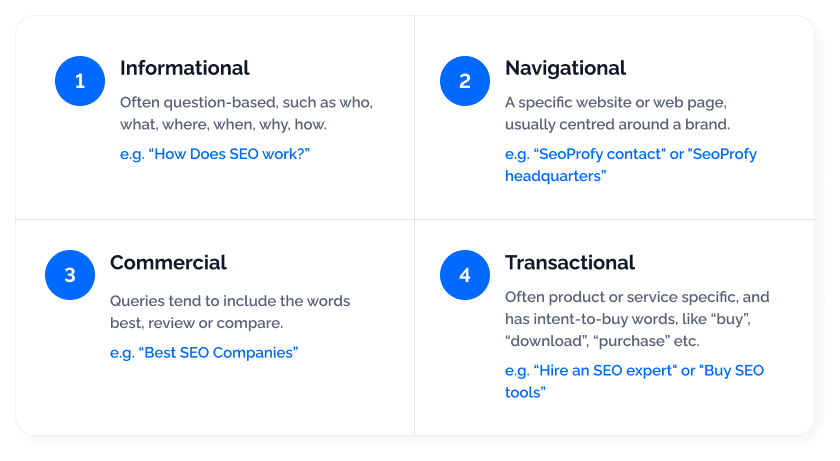
To ensure that your visitor performs the necessary action on your site, you should not just optimize your pages with some keywords but use the keywords with the right search intent and in the right context. You’ll want to create content that helps your potential customers answer questions, explore different options, and ultimately make a purchase.
Let’s take two different search intents. One customer searches for “How to tie a tie?” while another searches, “How to choose a tie?” The first customer is looking for instructions on how to tie a tie, which means they most likely will already own one. While it’s true they might eventually want to purchase a tie, this isn’t a guarantee. You might write an informational piece on this topic, but trying to optimize commercial content with such a keyword will attract the wrong type of visitor.
On the other hand, the second customer is trying to find instructions on how to choose a tie, so they will more likely want to purchase a tie from your online store. This means that it might be a good idea to target related keywords in a blog post and include a strong call-to-action and internal links to your store.
You can see from this example how only a single word can change the entire search intent and audience. When you understand and cater to your customers’ search intent, you’ll be able to target your marketing efforts more effectively.
Knowing your customers’ search intent is also a great way to guide your customers through the sales funnel. The sales funnel includes every stage of the buying process, from customer engagement to user experience.
For instance, your customer might go from researching “best car dealerships in Atlanta,” to doing a site search for a specific model of car and then researching car reviews for their desired model. All of these questions are an opportunity for you to use keywords to engage customers in every step of the sales process.
Importance of Analytics
It’s also vital to understand where your audience is coming from through website analytics. The type of traffic you get might largely depend on your type of marketing and paid advertising.
For instance, Facebook ads might generate a lot of traffic but no sales to your site. That’s because while many customers might click on your ad, they may not be in the market for your product at that time.
Analytics can help you identify this type of traffic so that you can adjust and optimize your marketing strategy and target the customers more likely to purchase from your site. Moreover, analytics provides valuable insights that can help you answer questions such as:
- Where are customers clicking on your site?
- How long do customers stay on each page?
- What keywords are leading them to your site?
- What tactics work for retargeting campaigns?
- What countries, regions, or cities are your visitors from?
Analytics can give you valuable data to tailor your marketing efforts and recover lost sales.
How Do I Analyze Traffic?
Learning how to analyze your traffic data is as easy as using GA4, or Google Analytics 4. GA4 offers many tools to help you monitor and understand your website traffic, including real-time data, site navigation paths, keyword tracking, conversion tracking, and more. This is your go-to tool if your ranking dropped or if you notice traffic but no sales.
To analyze your traffic sources, open GA4. Then, navigate to the “Acquisition” menu and select “Traffic acquisition.”
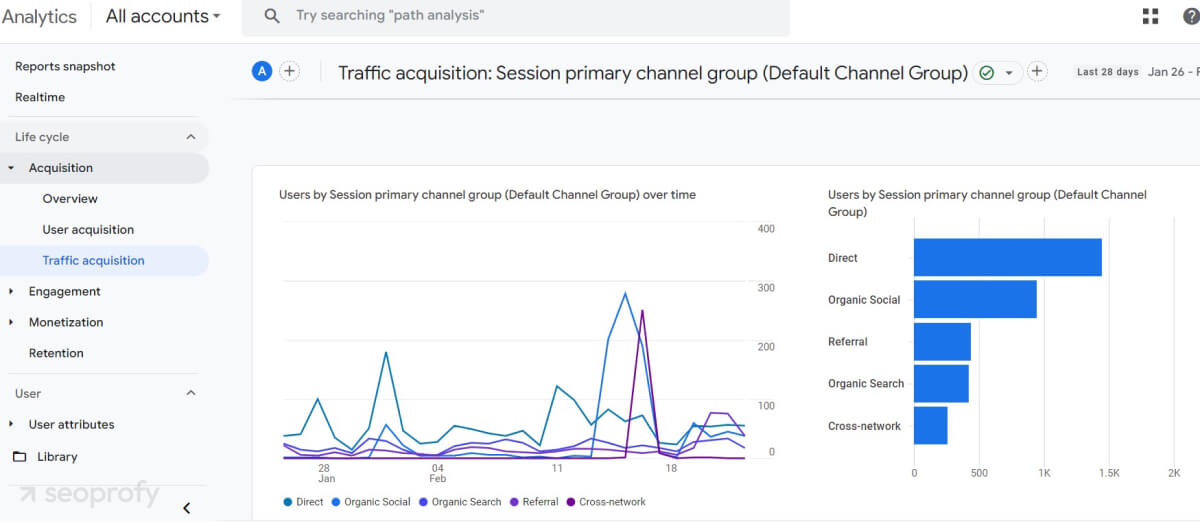
This report shows the sources of traffic to your site. Other helpful information includes which pages receive traffic and from what countries it comes.
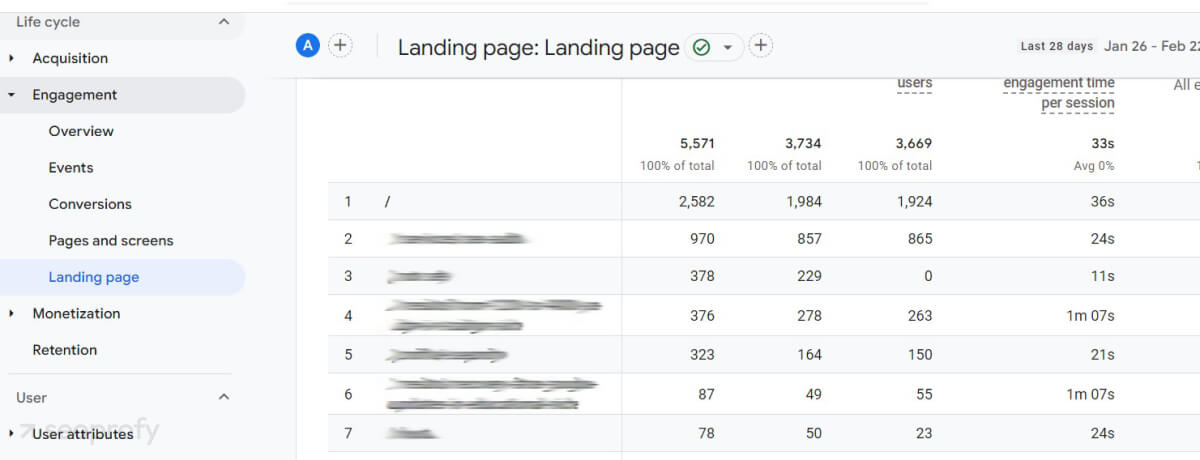
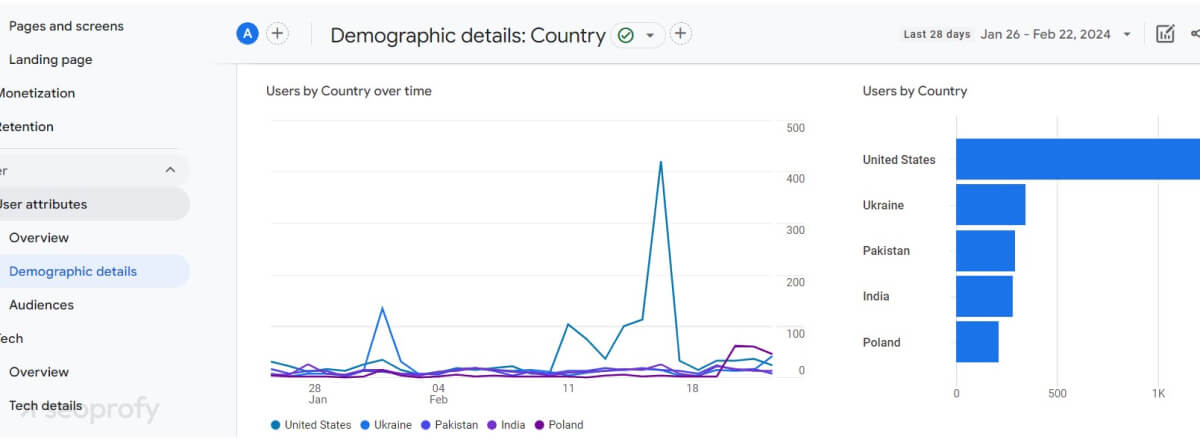
Tips for Targeting the Right Audience
If you see that your store has traffic but no sales because it doesn’t reach its target audience or region, you might need to adjust your strategies. Start by gathering information through customer surveys, competitive analysis, feedback forms, and social media platforms to get more information on what customers are looking for and how you can improve your products or services.
Social media polls, for instance, can give you insights into what products are in demand and how to best reach your target audience. This information can also be used for future marketing campaigns, helping you stay ahead of your competitors.
Using an email marketing tool, you can also send out targeted emails to your website visitors and customers, promoting special deals and discounts for lead generation. Many of these email marketing tools also have built-in analytics to track open rates, click-through rates, and other important metrics to help you assess the effectiveness of your email campaigns.
Unclear or Missing Calls to Action (CTAs)
A call to action can be a powerful tool to help guide website visitors to purchase a product or service and is one of the best tactics if your site is getting clicks but no conversions. Call-to-action paragraphs are critical to helping your visitors take the necessary actions on your pages.
For instance, if you run a termite inspection business, some website visitors might navigate to your page to look for answers on identifying the types of termites in their homes. While it’s important to give your customers the answers they need, such as giving them a rundown of different insects in the area, it’s also important to offer your products or services at the end of your article.
In this case, you can end your written content with a call to action to encourage customers to call your company. Successful eCommerce websites know how to have strong call-to-action closing statements that encourage customers to shop and generate more sales. By encouraging customers to call, make an appointment, or check out your products, your website page will generate more leads in no time.
Optimizing Landing Pages for eCommerce Stores
Landing page optimization can help promote your products and easily convert customers on your Shopify store or other platform. A landing page can reach your target audience and prevent them from getting distracted.
These pages often read like ads and persuade customers to purchase, sign up for a gift, newsletter, or email list, or otherwise interact with your business. They minimize the appearance of too many competing messages and help your customers focus on the purchase.
Your landing page should have contact details, ways to purchase, and products or services at the forefront. Instead of customers navigating through the rest of your site to find a product, landing pages should shorten the buying process while also integrating special promotions and preventing customers from being distracted.
Complicated or Lengthy Checkout Process
Your brand’s online presence is only a small part of what converts high traffic to sales. If you have high traffic but no sales, it might be useful to take a deep dive into your customers’ online shopping experience. One of the things that can impact how many visitors buy your products is poor checkout usability.
Research from Baymard Institute shows that the average checkout abandonment rate of online consumers who face a complicated checkout process is a staggering 22%! Take a look at your store template and make sure it’s clear enough to guide visitors through the checkout process.
According to the same study, the ideal checkout process should only have between 12 and 14 elements, or 7-8 form fields (name, address, credit card number, etc.). You’ll notice that most large online retailers have made it extremely simple to check out (take Amazon with their buy with one click option). Focus on simplifying the checkout process and providing an accurate order summary for your customers to help boost sales.
Price-Value Mismatch for Products
Pricing your products for your online shop can be difficult, especially during times of rising inflation and costs. However, if your products are perceived as low-value but are priced high, most visitors will quickly leave your store. Even if you offer a discount code for customers, it’s important to be realistic about what users want and what is in their price range.
For instance, if a customer is looking for a “baby crib,” they might have a budget of between $200 and $300. If you target this keyword and rank among the top online store searches for it but actually sell high-end cribs that cost thousands of dollars, your store visitors will leave without purchasing. Price-conscious shoppers will be disappointed due to this mismatch.
It’s okay to be passionate about your product and brand it as luxury. However, you’ll need to remember to use the right target keywords to not just get high traffic but to encourage shoppers to buy your product for its high-end appeal. For instance, use target keywords that contain appropriate descriptions like “luxury cribs”.
Insufficient Product Information
Most customers will want to explore your online products in and out before finalizing their purchase. Not having enough product information can negatively impact sales. Product information can include things such as:
- Descriptions: Detailed descriptions should provide all the necessary details to stir your customers to purchase your products. You can also use keywords in them to boost your SEO rankings.
- Photos: High-quality product photos showing multiple angles can help customers get a better idea of how big a product is and the material it is made of and overall feel better about shopping online rather than in person.
- Videos: Videos are a great way to showcase your item and its potential uses, or provide tutorials.
- Associated shipping fees: Many customers might feel upset to find hidden fees, like shipping rates, during the checkout process. High shipping costs are still the leading cause of abandoned carts. Offer this information ahead of time and specify whether you offer inexpensive standard shipping.
- Dimensions: It’s crucial to add dimensions to help shoppers calculate the space or size they’ll need.
- Available colors or sizes: Clearly showing available colors and sizes can help your customers find their perfect match or have them come back if their item isn’t in stock.
In addition to these items, consider adding an FAQ section to put your customers at ease and make them confident that your product is what they need. These sections are a great way to answer your customers’ concerns even if they have a shorter attention span or are limited on time.
If you’re writing a blog or informative article, or need candid photos to attract customers to your website, free professional stock images are an excellent resource that can easily be embedded into your site. These are just some examples of how you can quickly turn an empty product page into a great resource for customers.
Insufficient Trust Signals
You might be getting traffic but no sales because your store lacks trust signals that would prove your reliability to new visitors. Even if you offer incentives like a discount code or free shipping and impressive delivery times, how will your customers know these offers are truly going to be fulfilled? The only way they can make sure your business is secure is through trust signals from other customers and online reviews.
Did you know that around 32% of people read at least four customer reviews before making a purchase? Positive reviews are the most important trust signal to consider, but other signals include:
- Security badges
- SSL encryption
- High ranking on Google Maps or Google Search.
If you have a physical store, make sure your GBP, or Google Business Profile, is up-to-date with accurate information and positive reviews. Negative reviews can impact your Google Maps ranking, so make sure to address them as quickly as possible. Address any comments by offering contact information to help them get in touch with a customer service agent to remedy their problem.
Being upfront and apologetic goes a long way in building trust, especially if your comments are in full view of the public. Offering previous customers who had negative experiences a discount or gift can help mitigate negative reviews and show potential customers that you stand behind your products and services!
Limited Payment Options
Payment options are also a significant factor that can improve conversion rates and boost trust. If you have high traffic but no sales, the answer might be as simple as updating your payment options. User-friendly and secure payment options are vital to streamline the purchase process and seal the deal with customers.
Make sure to offer popular payment methods like PayPal and credit card payments, as well as more advanced checkout payment options. If your target market is younger customers who use their phones more often than older folks, having options like Google Pay and Apple Pay is a good way to simplify the buying process and increase sales from your desired audience.
Failure to Utilize Fear of Missing Out (FOMO) Tactics
There’s perhaps no better advertising and sales strategy than Fear of Missing Out (FOMO). It can drive customers to make a purchase as they don’t want to miss out on a great deal or limited-time offer. Businesses should take advantage of this psychological phenomenon by using various strategies such as flash sales, countdown timers, and limited stock announcements.
Customers might also be persuaded to purchase products if influencers, celebrities, or social media users rave about them. Seeing a product that is frequently featured on Instagram or YouTube can pique customers’ interest and push them toward making a purchase before it’s sold out.
Consider using the power of social media marketing to your advantage if you’re getting lots of traffic but no sales. Continuous posts can also help improve customer retention if your product matches their lifestyle.
User-generated content is also a great way to build FOMO for your products. By reposting customer photos or unboxing videos, you showcase real people using and loving your products, creating a sense of urgency for potential customers to buy before they miss out on the hype!
Conclusion
Many factors contribute to a successful eCommerce store, from website design and customer service to marketing for targeted traffic. To set your eCommerce business for success, keep these simple tips in mind:
- Prioritize usability
- Focus on your target audience
- Constantly evaluate the performance of your online store
- Incorporate strategies like A/B testing to try out new approaches.
If you want to improve your site search ranking and boost your sales in no time, contact SeoProfy today – and we’ll help your website attract high-quality organic traffic that will bring real results!


